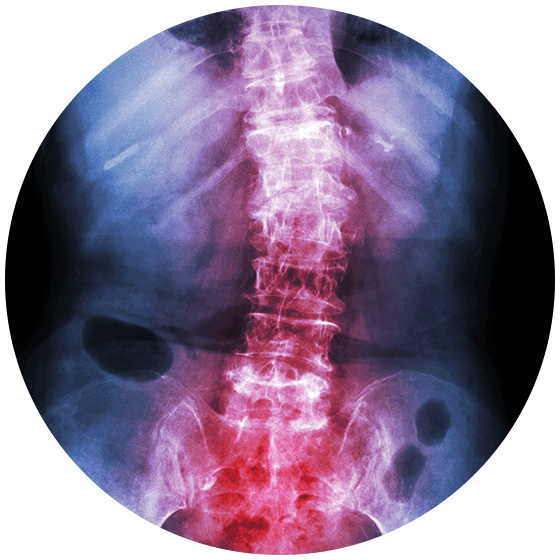Adult Scoliosis

Adult Scoliosis Symptoms & Treatment Options
For some, when the term “scoliosis” is mentioned, it conjures up memories of adolescence. And more specifically, of the scoliosis screening that was performed by the school nurse… When we were younger, many of us heard quite a bit about scoliosis in health classes or from our doctor. Maybe some of us even knew a person with scoliosis who wore a brace to help straighten and support their back. What some people don’t know, however, is that scoliosis can appear in adulthood.
Without any previous medical history of scoliosis as a child or teenager, an adult’s spine can progressively develop an abnormal curve. It is also interesting to note that adult scoliosis affects more individuals than adolescent scoliosis does. It is also thought that the prevalence of scoliosis will increase in the future, as the population continues to age and live even longer.
If you or someone you know is experiencing adult-onset scoliosis, the following symptoms may emerge:
An unnatural curve of the spine ranging from 10 degrees to 80 degrees or more
An abnormal gait, leading to possible joint damage in the hips, knees, or ankles
A pitched forward posture that makes it difficult to look ahead and ambulate
Pain and stiffness in the lower back or in the location of the degenerative curve
Tingling, loss of sensation, or stabbing pain because of pinched nerves and inflammation
Difficulty breathing as the exaggerated curvature of the spine compresses the lungs
Symptoms of Adult Scoliosis
The visible symptoms of adult scoliosis are similar to those of pediatric scoliosis, while the internal symptoms can sometimes be more severe. Keep in mind that the severity of symptoms may intensify as the degree of curvature increases.
Adult-onset scoliosis can be a distressing experience—both in the psychological impact of your body’s changing appearance and in the physiological pain and inflammation that the condition can cause. Our physicians at The Advanced Spine Center have spent years addressing the causes of adult-onset scoliosis. Dr. Jason Lowenstein has many years of experience using minimally invasive procedures to address degenerative disc conditions that lead to scoliosis. Specializing in the use of conservative interventions, such as pain management and collaboration with physical therapists, Dr. Lowenstein and his team will develop an individualized treatment plan to address your specific condition.
Causes of Adult Scoliosis
There are several precipitating factors that may result in adult-onset scoliosis. Almost all of these factors are related to age and the age-related degeneration of spinal tissues and bones. One of the main reasons that we see scoliosis in adults is from exactly this: the degeneration of vertebrae and vertebral tissues due to osteoarthritis.
According to the Arthritis Association, one in two adults will experience some form of osteoarthritis in their lifetime. Osteoarthritis, most often seen in adults over age 60, involves the breaking down of cartilage between our joints. Negative side effects, such as pain or the development of bone spurs, often result. This deterioration often occurs in knees, hips, fingers, and yes, the spine. When the tissues between our vertebrae break down, it can lead to the compression of the spinal cord or spinal nerves, the growth of bone spurs, and a change in the shape of the spinal canal and the joints between our vertebrae.
Other causes of adult scoliosis include other degenerative conditions such as spinal stenosis, compression fractures, and degenerative disc disease. Like osteoarthritis, all of these conditions lead to damage of intervertebral discs, cartilage, and bone material which can result in compression of the vertebrae and nerves. This can even cause changes to the joints between our bones. Furthermore, changes in the angles between bones will change the direction of movement and the shape of the spine, possibly leading to scoliosis.